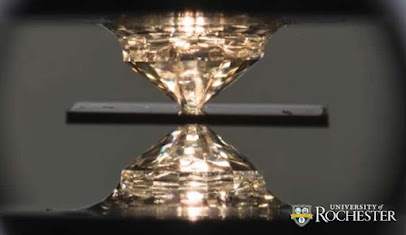Viable superconducting material created at low temperature and low pressure
International Conference on Condensed Matter Physics
"With this material, the dawn of ambient superconductivity and applied technologies has arrived," according to a team led by Ranga Dias, an assistant professor of mechanical engineering and physics. In a paper in Nature, the researchers describe a nitrogen-doped lutetium hydride (NDLH) that exhibits superconductivity at 69 degrees Fahrenheit (20.5 degrees Celsius) and 10 kilobars (145,000 pounds per square inch, or psi) of pressure.
Although 145,000 psi might still seem extraordinarily high (pressure at sea level is about 15 psi), strain engineering techniques routinely used in chip manufacturing, for example, incorporate materials held together by internal chemical pressures that are even higher.
Scientists have been pursuing this breakthrough in condensed matter physics for more than a century. Superconducting materials have two key properties: electrical resistance vanishes, and the magnetic fields that are expelled pass around the superconducting material. Such materials could enable:Power grids that transmit electricity without the loss of up to 200 million megawatt hours (MWh) of the energy that now occurs due to resistance in the wires
Frictionless, levitating high-speed trains
More affordable medical imaging and scanning techniques such as MRI and magnetocardiography
Faster, more efficient electronics for digital logic and memory device technology
Tokamak machines that use magnetic fields to confine plasmas to achieve fusion as a source of unlimited power
Previously, the Dias team reported creating two materials—carbonaceous sulfur hydride and yttrium superhydride—that are superconducting at 58 degrees Fahrenheit/39 million psi and 12 degrees Fahrenheit/26 million psi respectively, in papers in Nature and Physical Review Letters.
#condensed are #condensed #physicslaw #classicalphysics #physics #science #sciencefacts #laws #physicslovers #physicsfacts




Comments
Post a Comment